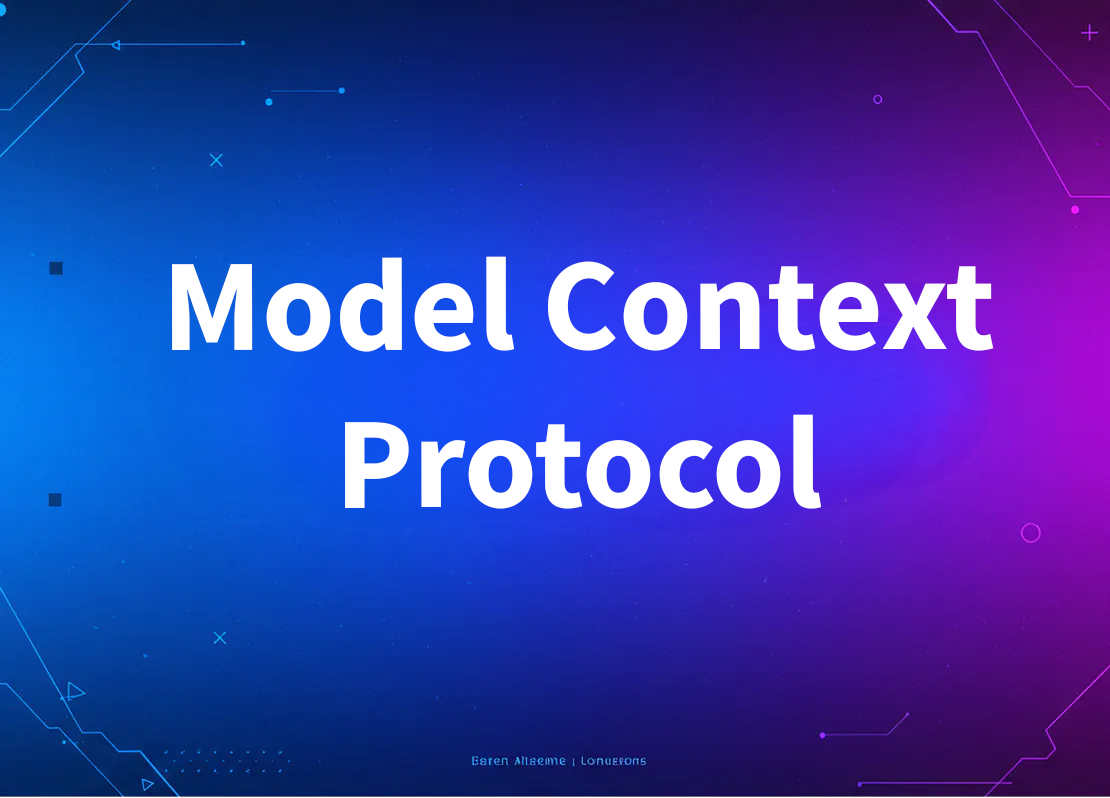
Model Context Protocol: Connecting AI to Your Systems
- Serkan H
- Mcp , Ai agents , Model context protocol
- April 2, 2025
Table of Contents
MCP bridges the gap between AI assistants and your organization’s tools, enabling seamless data access and automation
What is MCP and Why Should You Care?
Model Context Protocol (MCP) is a standardized communication framework that enables large language models like Claude to interact directly with your systems and data sources. Introduced by Anthropic in 2023, MCP solves the fundamental limitation of AI assistants: their isolation from your organization’s tools.
With MCP Servers, your AI assistant can:
- Access and analyze logs from monitoring systems
- Retrieve alerts from communication channels
- Check infrastructure status during incidents
- Query databases and knowledge bases
This means less manual data gathering and more time solving actual problems.
How MCP Works: Connecting AI to Your Systems
MCP’s elegance lies in its architecture:
- MCP clients (Claude desktop app, Cursor, Cline etc…) make requests for external data
- These requests are routed to MCP servers running on your local machine or cloud environment
- The servers act as intermediaries, connecting to your systems via APIs and returning data to the LLM
By implementing MCP servers, you effectively give AI models the ability to “see” into your organization’s tools and data sources, dramatically expanding their capabilities

Real-World Impact: Transforming On-Call Response
To appreciate MCP’s value, consider this scenario:
WITHOUT MCP
It’s 3 AM. Your pager blares with an urgent production alert. You drag yourself to your laptop and begin the all-too-familiar ritual — jumping between dashboards, digging through logs, correlating Kubernetes events with metrics, and struggling to piece together what happened while drafting updates for stakeholders.
WITH MCP
Same scenario, but you simply open Claude and type: “What’s the latest alarm on #ops-alerts, and investigate the root cause.” Within seconds, Claude:
- Retrieves the alert details from Slack
- Pulls relevant logs from your monitoring systems
- Analyzes recent deployments and infrastructure changes
- Correlates the issue with historical incidents
- Drafts a comprehensive analysis with recommended actions

This isn’t just convenience — it’s a fundamental transformation of incident response through intelligent context management and automation.
Getting Started With MCP: A Simple Implementation
Setting up a basic MCP server is quite straightforward. Here’s how to get started:
Prerequisites
- Claude Desktop Client: Install the latest version of Claude for Desktop on macOS or Windows
- Node.js and npm: Ensure these are installed on your system to manage packages
- Brave Search API Key: Register for a Brave API key (requires an account)
Installation Steps
Install the Brave Search MCP Server
Open Command Prompt or PowerShell as administrator and run:
npm install -g @modelcontextprotocol/server-brave-searchCreate Configuration File
Navigate to the Claude Desktop configuration folder:
- Windows:
%AppData%\Claude Desktop\ - macOS:
~/Library/Application Support/Claude/
- Windows:
Configure the Server
Create a file named
claude_desktop_config.jsonand add your configuration.Note: Replace
YOUR_BRAVE_API_KEYwith your actual Brave API key
Important Notes
For Windows users: If you encounter path-related errors, use absolute paths. This helps avoid issues where the GUI app’s PATH differs from your terminal’s PATH.
{
"mcpServers": {
"brave-search": {
"command": "npx",
"args": [
"-y",
"@modelcontextprotocol/server-brave-search"
],
"env": {
"BRAVE_API_KEY": "YOUR_BRAVE_API_KEY"
}
}
}
}
# For windows users:
{
"mcpServers": {
"brave-search": {
"command": "C:\\\\path\\\\to\\\\npx",
"args": [
"-y",
"@modelcontextprotocol/server-brave-search"
],
"env": {
"BRAVE_API_KEY": "YOUR_BRAVE_API_KEY"
}
}
}
}
Restart Claude Desktop: Fully quit and restart Claude Desktop. Upon relaunch, it should read your new configuration and attempt to start the “brave-search” MCP server automatically.
Once the Claude desktop starts you should be seeing a hammer icon that is indicating the tools that are installed on the Claude app.

- Now that the brave search installed, lets give it a spin by asking Claude something that can only be retrieved from the latest info.
Beyond Incident Response: Additional Use Cases
Security Considerations: Implementing MCP Securely
With great power comes great responsibility. When implementing MCP, consider:
Access control: Limit what systems and data your MCP server can access. You don’t want your secrets, proprietary info, and PIIs shipped to a third party.
Authentication: Implement proper authentication between clients and servers
Audit logging: Track all requests made through your MCP server
Data minimization: Only expose the minimum necessary data to complete tasks
Sandboxing: Consider running MCP servers in isolated environments
Remember that MCP effectively extends AI capabilities into your systems — implement with the same security rigor you’d apply to any critical infrastructure component.